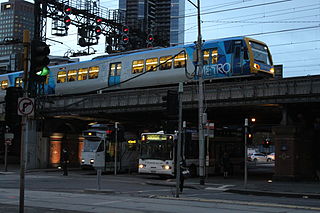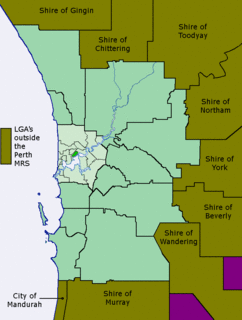
Highways in Australia are generally high capacity roads managed by state and territory government agencies, though Australia's federal government contributes funding for important links between capital cities and major regional centres. Prior to European settlement, the earliest needs for trade and travel were met by narrow bush tracks, used by tribes of Indigenous Australians. The formal construction of roads began in 1788, after the founding of the colony of New South Wales, and a network of three major roads across the colony emerged by the 1820s. Similar road networks were established in the other colonies of Australia. Road construction programs in the early 19th century were generally underfunded, as they were dependent on government budgets, loans, and tolls; while there was a huge increase in road usage, due to the Australian gold rushes. Local government authorities, often known as Road Boards, were therefore established to be primarily responsible for funding and undertaking road construction and maintenance. The early 1900s saw both the increasingly widespread use of motorised transportation, and the creation of state road authorities in each state, between 1913 and 1926. These authorities managed each state's road network, with the main arterial roads controlled and maintained by the state, and other roads remaining the responsibility of local governments. The federal government became involved in road funding in the 1920s, distributing funding to the states. The depression of the 1930s slowed the funding and development of the major road network until the onset on World War II. Supply roads leading to the north of the country were considered vital, resulting in the construction of Barkly, Stuart, and Eyre Highways.

The Western Australian Legislative Assembly, or lower house, is one of the two chambers of the Parliament of Western Australia, an Australian state. The Parliament sits in Parliament House in the Western Australian capital, Perth.

Hamersley is a residential suburb 14 kilometres north-northwest of the central business district of Perth, the capital of Western Australia, and six kilometres (4 mi) from the Indian Ocean. The suburb adjoins two major arterial roads—Mitchell Freeway to the west and Reid Highway to the south—and is within the City of Stirling local government area. It was built during the late 1960s and 1970s as part of the Government of Western Australia's response to rapidly increasing land prices across the metropolitan area.
Local government in Australia is the third tier of government in Australia administered by the states and territories, which in turn are beneath the federal tier. Local government is not mentioned in the Constitution of Australia and two referenda in the 1970s and 1980s to alter the Constitution relating to local government were unsuccessful. Every state government recognises local government in their respective constitutions. Unlike Canada or the United States, there is only one level of local government in each state, with no distinction such as cities and counties.
Western Australia is divided into regions according to a number of systems.

The National Capital Region (NCR) is a central planning region centred upon the National Capital Territory in India. It encompasses the entire NCT of Delhi and several districts surrounding it from the states of Haryana, Uttar Pradesh and Rajasthan. The NCR and the associated National Capital Region Planning Board were created in 1985 to plan the development of the region and to evolve harmonized policies for the control of land-uses and development of infrastructure in the region. Prominent cities of NCR include Delhi, Gurugram, Noida, Faridabad and Ghaziabad.

Transport in Melbourne, the state capital of Victoria, Australia, consists of several interlinking modes. Melbourne is a hub for intercity, intracity and regional travel. Road-based transport accounts for most trips across many parts of the city, facilitated by Australia's largest freeway network. Public transport, including the world's largest tram network, trains and buses, also forms a key part of the transport system. Other dominant modes include walking, cycling and commercial-passenger vehicle services such as taxis. Melbourne is a busy regional transport hub for the statewide passenger rail network, coaches and interstate rail services to New South Wales and South Australia. Freight transport also makes up a significant proportion of trips made on the network from the Port of Melbourne, Melbourne Airport and industrial areas across the city.
Environmental planning is the process of facilitating decision making to carry out land development with the consideration given to the natural environment, social, political, economic and governance factors and provides a holistic framework to achieve sustainable outcomes. A major goal of environmental planning is to create sustainable communities, which aim to conserve and protect undeveloped land.
Structure Planning is a type of spatial planning and is part of urban planning practice in the United Kingdom and Western Australia. A structure plan in any jurisdiction will usually consist of a written component, supported by maps, photographs, sketches, tables and diagrams and a 'plan' component consisting of one or more plans illustrating land use and infrastructure proposals for the area being planned.

Great Eastern Highway Bypass is a limited-access dual carriageway linking Great Eastern Highway and Roe Highway in Perth, Western Australia. Together with a section of Roe Highway, it bypasses the historical Guildford and Midland localities, through which the original, urban and slower Great Eastern Highway passes.
The South East Queensland Regional Plan 2009-2031 is a statutory plan designed to guide regional growth and development in South East Queensland, Australia. It was established under the Integrated Planning Act 1997, which has now been replaced by The Sustainable Planning Act 2009.
Nagpur Improvement Trust (NIT)(Marathi: नागपूर सुधार प्रन्यास [नासुप्र]) is a local civic government body with the task of developing new areas within city limits of Nagpur, India and maintaining existing city infrastructure. Trust works along with Nagpur Municipal Corporation (NMC) which is an elected body of city representatives (Corporation). NIT itself is not a democratically elected civic body and has members appointed in it from various levels like Government of Maharashtra, NMC and other representatives of Nagpur city. NIT thus has a small management body as compared to NMC. NIT holds the planning and development authority for Nagpur city but does not receive any funds from state government. Funds needed for development work are raised by NIT through the auction of newly developed areas.
A combined authority is a type of local government institution introduced in England outside Greater London by the Local Democracy, Economic Development and Construction Act 2009.

The Perth metropolitan region or Perth metropolitan area is the administrative area and geographical extent of the Western Australian capital city of Perth and its conurbation.

The Localism Act 2011 is an Act of Parliament that changes the powers of local government in England. The aim of the act is to facilitate the devolution of decision-making powers from central government control to individuals and communities. The measures affected by the Act include an increase in the number of elected mayors, referendums and the "Local authority’s general power of competence" which states "A local authority has power to do anything that individuals generally may do".

Public Transport Victoria is the trading name of the Public Transport Development Authority (PTDA), a statutory authority in the Australian state of Victoria responsible for providing, coordinating and promoting public transport. It began operating on 2 April 2012, taking over many of the responsibilities previously exercised by the Director of Public Transport and the Department of Transport. It also took over the marketing of public transport in Victoria from Metlink and Viclink, as well as responsibility for the myki ticketing system, formerly handled by the Transport Ticketing Authority.

The Sydney Region Outline Plan (SROP) was a land use and infrastructure scheme for metropolitan New South Wales released by the State Planning Authority in March 1968. The SROP superseded the 1948 County of Cumberland planning scheme. Whereas the Cumberland scheme echoed contemporary plans for London, the SROP adopted a Scandinavian model of town centres arranged along existing railway corridors.









